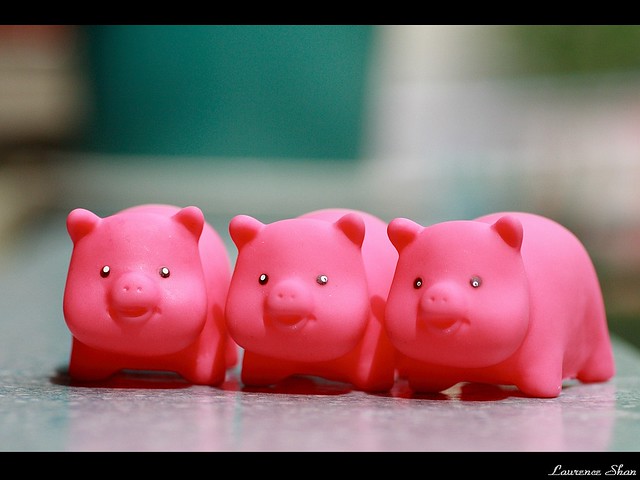Image source: http://www.flickr.com/photos/laurenceshan/139735219/
Let me tell you a story. Once upon a time there were three little pigs that needed to build a house. It was really important for the three little pigs that their new house was safe as they’d had some bother with a nasty old wolf.
“I think we should build the house out of straw” said the first little piggy “It’s cheap and we can put the house together quickly – which will keep out the big bad wolf.”
The second little piggy wasn’t so sure.
“Isn’t it better to spend a bit more money on bricks to make sure it’ll be really sturdy? Yes it’ll take longer but then we’ll be sure that the big bad wolf won’t be able to eat us.”
All 3 little pigs continued to argue in this way until the third little piggy stepped in.
“I’m worried about Mother. She’s the one paying for this house and she’ll want it done quickly and for as cheap as possible!”
Don’t get eaten by the big bad wolf
We are all familiar with the three little pigs and what happened to that straw house right? By taking the easy route and building the house out of straw the little pig got eaten by the big bad wolf whereas the pig that took the time and spent a bit more money to build a house of bricks survived.
The moral of the story applies to user experience and we’ve seen this transpire many times over. Teams are excited to get stuck into a project and although they like our user centered design process they can sometimes start to worry about time and budget and can go into panic mode in an attempt to get started. In this current economic climate we understand that people are concerned over budgets but often there is something deeper holding them back. In our experience it’s the fear over what their boss wants (just like the little pig that was worried about Mother’s money).
Why making assumptions is a big no-no
Often people will choose to spend slightly less money and get things done slightly quicker for a release of an average project based on assumptions and rushed planning instead of one that has a clearer understanding of user needs and a validated concept.
What’s frustrating about this situation is that the project sponsor is often very open to getting the job done well and has realistic timescales in mind and a decent sized budget. This just goes to show that assumptions are not a good way of working and can lead to settling for second best and nestling in the safety of a mediocre product.
Don’t settle for second best
Launching a successful new product that meets the needs of the business and the users doesn’t happen by accident. It requires passionate people like the second little pig who wouldn’t settle for less than the best. It requires people who are willing to challenge convention and push for the right process to create a good product.
If you want a great product that delivers a great user experience you will have to step out of your comfort zone and fight for it sometimes. It can be difficult and challenging but the rewards are there for all to see. You can be proud of having a great project in your portfolio and a fantastic example of a good user centred design process. Of course there are times where you’ll have to be pragmatic and settle for a less than perfect approach, that’s natural and we’re not advocating throwing your toys out of your pram every time you go into a project briefing meeting. Just don’t be afraid to question deadlines and budgets to see if there is more scope. Have the courage to ask the difficult questions about the cost of a failed product because after all happy users lead to a successful project.
In other words, don’t settle for building your house out of straw.
Key Takeaways:
1) Don’t rush and scrimp because you think it’s what your boss wants. Don’t be afraid to ask those tough questions.
2) Stand up and fight for a better product. Have the balls to push back.


